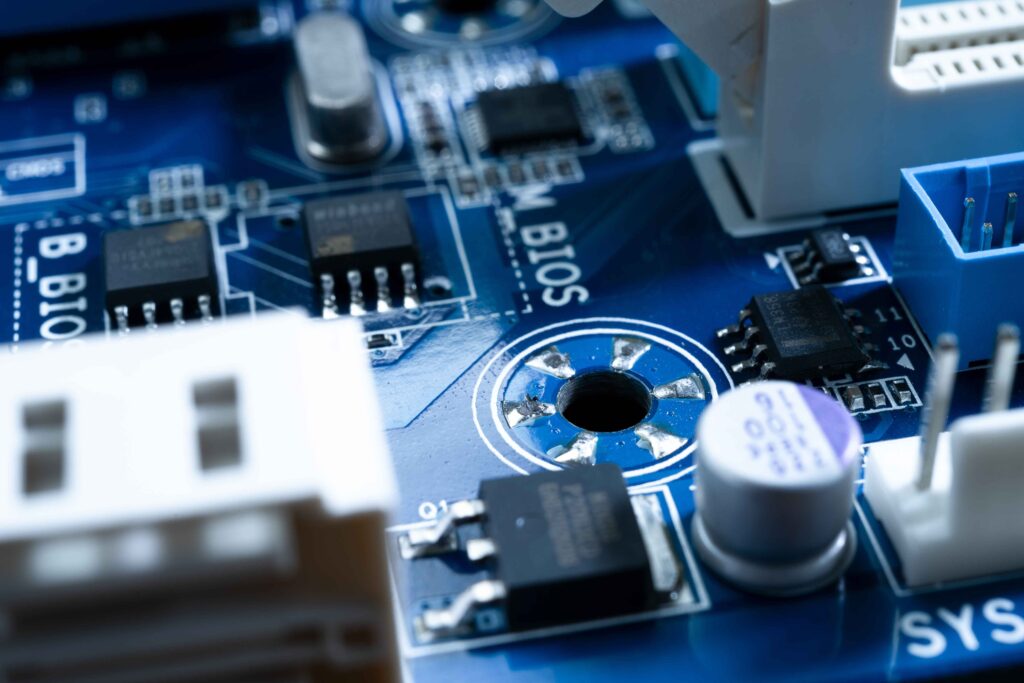Blockchain and cryptocurrency are two of the most buzzed-about topics in the financial world today. But what exactly are they? And what implications do they have for businesses and investors?
Simply put, blockchain is a digital ledger of transactions and the backbone of cryptocurrency, providing a secure, decentralised way to record and verify transactions. Cryptocurrency is a digital currency that uses cryptography for security.
Cryptocurrency is often seen as a disruptive force in the financial world, with the potential to upend traditional banking and financial institutions. Blockchain, on the other hand, has the potential to revolutionise a wide range of industries, from supply chain management to healthcare.
For businesses, understanding blockchain and cryptocurrency are essential to staying ahead of the curve. As for investors, these technologies can offer new opportunities to make profits.
Understanding these two concepts is essential to understanding the potential of the technology as a whole. So, let’s get started!
What do Blockchain & Crypto Offer?

The rising popularity of blockchain and cryptocurrency is due to the fact that they offer a secure, decentralised way to store and transfer data. Unlike traditional systems that are centrally controlled by a single entity, blockchain is a distributed database maintained by a network of computers. This makes it much more difficult for hackers to target, as they would need to take control of 51% of the network for the attack to be successful.
The benefits of blockchain technology are numerous. Perhaps most importantly, blockchain provides a secure and transparent way to store and exchange data. Because each block in a blockchain is linked to the previous block, it is nearly impossible to tamper with data without being detected. This makes blockchain ideal for handling sensitive data, such as financial transactions.
In addition to its security features, blockchain is also highly efficient. As such, transactions can be processed quickly and easily without intermediaries. This makes blockchain ideal for applications where speed and efficiency are critical, such as supply chain management.
The most important and exciting blockchain application is crypto which is also gaining popularity due to its anonymity and the fact that it can be used to make secure, peer-to-peer payments. Unlike traditional fiat currencies, which central banks regulate, cryptocurrency is not subject to any central authority. This makes it a popular choice for those who want to avoid banks or government control over their finances.
How Does it Work?

Blockchain technology is a system that allows for secure, decentralised record-keeping. Essentially, it is a digital ledger maintained by a network of computers rather than by a central authority. This network is constantly verifying and updating the ledger, ensuring that all information is accurate and up-to-date. Because there is no central authority, blockchain is incredibly secure. Hacking or tampering with the ledger would require gaining control of a majority of the computers in the network, which is virtually impossible.
This technology is a framework that stores public transaction records, aka blocks, on different databases known as the chain on the network connected via peer-to-peer nodes. And each block on a blockchain contains multiple transactions, and each time a new transaction occurs on a blockchain, the transaction record is added to each participant’s ledger.
When additional data is added (a new block) to a blockchains ledger, it is sent to every user (node) in the network. Because each block can only store a certain amount of information, new blocks are constantly added to the blockchain, creating a chain. A new block thus becomes an official record in a blockchain’s ledger.
The block is permanently linked with all the previous blocks of transactions using a cryptographic fingerprint known as the hash. Once the block is created and becomes part of the blockchain, any transactions contained within will also become part of the blockchain. Transactions are collected in blocks before they are added to the initial blockchain.
If the blockchain uses Proof-of-Work (PoW) to verify blocks, as Bitcoin does, then a large amount of computing power is required to execute transactions.
Proof-of-Stake (PoS) is another popular mechanism to do this, which Ethereum recently adopted. However, it is worth pointing out that blockchains do not have to use PoW or PoS – other alternative consensus algorithms exist, too, and blockchains that are not publicly traded or used for currencies may generate blocks differently in ways that are far more efficient.
Public blockchains like Bitcoin and Ethereum allow any user with the necessary computing power to take part in validating and recording transactions on a blockchain as a node. Due to the decentralised nature of their blockchains, all transactions can be transparently seen by having either an individual node or using blockchain visualisers, which allows anyone to view transactions occurring in real time.
Use Cases

The use cases of blockchain technology are varied. Perhaps the most well-known use case is in the realm of cryptocurrency, where blockchain is used to power Bitcoin and other digital currencies. However, blockchain has also been used to create distributed databases that are secure and tamper-proof, which has a wide range of potential applications.
For example, blockchain could be used to create a secure land registry or medical records database. And in the future, the use cases of blockchain technology are likely to become even more diverse and widespread. Moreover, because blockchain provides a tamper-proof method for sharing information, some organisations use blockchain in healthcare to store sensitive health records.
Blockchain further allows for a secure way for individuals to interact directly with one another without an intermediary like the government, banks, or other third parties. Centralised systems traditionally require the approval of a regulatory body such as the government or a bank to conduct transactions. However, with blockchain technology, transactions are conducted by a user as a consensus, which results in more seamless, safe, and faster transactions.
This way, the technology can support different applications related to different industries such as finance, supply chain, manufacturing, etc.
As for cryptocurrencies, which are built on blockchain, they are not subject to a central bank or government control or financial institutions, or other third-party intermediaries.
Bitcoin is the first and most well-known cryptocurrency created by the pseudonymous Satoshi Nakamoto in 2008 as a response to the Great Financial Crisis and the financial world’s reliance on banks as intermediaries.
Cryptocurrencies are traded on both centralised (CEXs) and decentralised exchanges (DEXs) and can also be used to purchase goods and services.
In recent years, crypto assets have become increasingly popular as more and more people have become interested in the potential benefits of this new form of money.
Cryptocurrency is often seen as a more secure form of money, as it is not subject to the same centralisation and regulation as fiat currency. It is also often more anonymous than fiat currency, as it can be used to make transactions without revealing personal information.
Finally, cryptocurrency is often more decentralised than fiat currency, meaning that it is not subject to the control of any one government or financial institution.
The potential benefits of cryptocurrency make it an attractive option for those looking for a new form of money. However, it is important to remember that cryptocurrency is still a new asset class and inherently volatile. As such, it is important to do your own research and invest carefully.
Get Started Accessing the Blockchain

Whether you’ve been exploring blockchain technology for a while or are brand new to this whole thing and are more interested in earning money from crypto, RockX has something for you.
For beginners looking to get started earning yield on crypto, RockX’s newly launched staking portal makes earning yield on your crypto products as simple as a few clicks. Prior to any sort of financial investment, it is always prudent to do your own research. Staking is a great way to earn passive income on your digital assets, but it does come with its own risks. Do not invest anything you cannot afford to lose.
As more actually accessing blockchains, whether for building decentralised applications (dApps) or other things, blockchain access nodes might be something of interest. RockX also has an access node API portal that simplifies cross-chain building. With just one account, connect your dApp to 20+ of the leading Proof of Stake chains across the world.
Final Word

Blockchain and cryptocurrency are often spoken about in the same breath, and for a good reason. Cryptocurrency is built on blockchain technology, and the two have a symbiotic relationship. Cryptocurrency brings blockchain to life, and blockchain gives cryptocurrency its power.
They provide individuals with the ability to conduct transactions anonymously and with the ability to spend money without interference from another party. By spreading the operations of a blockchain over a network of computers, blockchain allows cryptocurrencies to function without requiring a central authority.
While gaining popularity due to increased usage of Bitcoin, Ethereum, and other cryptocurrencies, blockchain technology has promise in the areas of legal contracts, real estate sales, health records, and any industry where the authorisation and recording of a set of actions or transactions are needed. Overall, the use of cryptocurrencies and blockchain technology, as a whole, will only grow from here.









